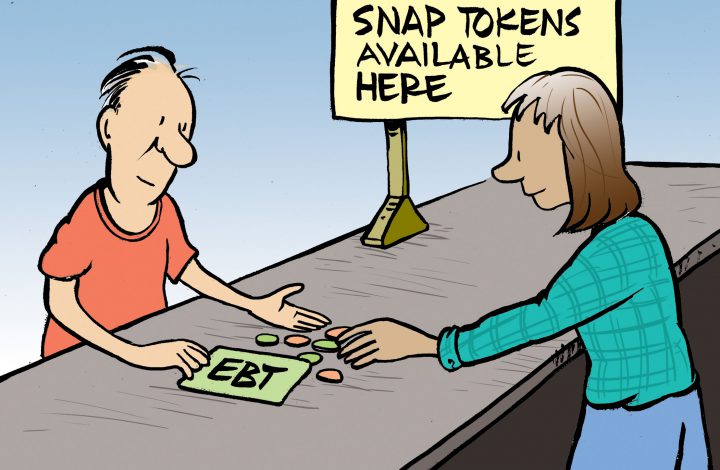Developing a Business Plan
A traditional or standard business plan is the most common type of plan. A standard plan is organized into sections that are highly detailed and several pages long. On the other hand, a lean start-up plan is a simpler version of the traditional business plan; it includes a summary of key points and can be as short as a single page. A lean start-up plan can provide a template to develop a more comprehensive standard plan later on, and it can serve as a useful handout to recruit partners or investors. The Business Model Canvas is an easy worksheet with prompts a through a nine-step process that is broken down to identify key partners, activities, value propositions, resources, relationships, costs, and income sources without the large time commitment of a standard business plan. Whether it is a standard or lean plan, most formats include the following categories:
Executive Summary
This section provides a general overview of the business and why it will be successful. The executive summary should include a mission statement that explains the purpose of the products in the marketplace and the goals of the company. It should end with a description of the leadership team, general financial information and projected growth plans. Consider this section the sales pitch for the business as a whole. Since it provides an overview, it is best to write the executive summary last. For more ideas and examples of the Executive Summary section, visit Inc. and B Plans.
Opportunity
This section should describe the market potential, or where and why there is a demand for the products or services the business is going to offer. If there is a competitive product or service already in the market, it should describe how the new product or service offered by this business be different and better. A good way to approach this section is to present the absence of the product or service as a problem, and the business is going to solve the problem by offering the product or service as a solution. Providing information about successful examples from other areas of the food business may be useful, as well as data from consumer surveys or focus groups. This section should target the ways that this new product or service is unique and special when compared to what is currently available to consumers in existing markets and the sales volume or sales value that this new product can capture. The opportunity section should flow into the execution, which will describe strategies to create and capture sales opportunities. For more ideas and examples of the opportunity section, visit Entrepreneur.
Execution
Execution is a large part of the business plan because it is the action part of the plan. It should answer a wide variety of questions regarding specific strategies to achieve specific goals. Execution is important because anyone can develop a great idea, but a clear path on how to implement the idea is the difficult part. This section should convince the reader that the proposal is not just a bunch of “hot air” ideas with no real strategy set in place or no resources to invest. The execution section should inspire a sense of confidence that the business is a well-planned effort with all bases covered. At the same time, the plan should also be flexible enough to modify or adapt in the likely event that something unexpected happens. Things to consider when writing about this step:
- When and where will the product or service be sold?
- Who is the target consumer buying this product or service?
- What type of marketing strategies will be used?
- How will legal, permitting, and licensing requirements be met?
- What type of production system is or will be in place?
- What are the operations plans?
Organization
This section should describe how the company is structured and the key people who are in charge. It should include brief resumes (one to two sentences) of people who will play a role in the business to demonstrate why they are qualified to do so. Be sure to list any skills, talents, knowledge and abilities each member brings to the table as well as previous experience. If these people are in charge of food safety, list their relevant training and certificates. Use an Organization chart to outline the roles and responsibilities of each person and the work breakdown for each. Describe the legal structure of the business and any licenses, permits or special certifications already obtained. There will be an opportunity to attach full resumes in the appendix section of the plan.
Financial Plan
This section should convince the reader that the business has a solid financial plan with sufficient resources to support the business and maintain growth over the long term. It should include income statements, balance sheets, and cash flow statements if the business has been in operation and any collateral that can be used to secure a loan. Charts and graphs are particularly useful in the Financial Plan. Use patterns in the current financial history of the business to predict a financial outlook for the next five years by including predicted income statements, balance sheets, cash flow statements, and capital expenditure budgets. This section should clearly explain the most important questions about a new business: How and when will it make a profit? and How much of a profit will it make?Be realistic and believable in the predictions. Common questions a reader may have are:
- What is the operating budget, and will it increase or decrease over time?
- When will the business break-even? When will it turn a profit?
- How will cash flow through the business (salaries, production costs, revenue)?
- Will the income from sales go back into the business for growth and development? If so, for how long?
The financial planning guide on this website provides a more detailed breakdown of information to include in this section.
Appendix
The appendix can include additional information that either does not fit into the other categories or elaborates on the information in previous categories. To view an example, visit BPlans. The appendix can include:
- Resumes of central people
- Additional descriptions and images of products and services
- Legal agreements
- Organizational charts
- Data from market research or competitive analysis
- Financial documents, contracts, permits, or projections
- Letters of support or partnerships
- Photographs of sales venues, promotional materials, etc.
Contact Sheet
This page should include contact information for top personnel and decision-makers as well as the company website and social media.
Using a business plan for loans, grants, investors, and partnerships
Investors, donors, banks, and partners will expect a solid business plan before making a decision to invest in, donate, or lend to, or join up with a business. The financial section of a business plan should clearly explain how much money is needed to start-up and/or operate the business over the next five years and includes a budget detailing and justifying each expense (equipment, employee salaries, rental space, etc).
A separate section in the plan, generally toward the end, should outline a specific request for funding that defines the terms and conditions of the request: Will the investment will be considered debt paid back with interest or equity (a partnership or stake) in the business? What are the terms of the investment – most importantly the length of time for repayment, the agreed return on investment, and/or the duration of the ownership stake in the business. The request should also include long-term strategies to continue growing and eventually selling the business.
It is important to note that most farmers’ market businesses do not need to accrue debt or take on partnerships, and many farmers’ market business owners prefer to grow on demand, a concept called ‘bootstrapping.’ Although bootstrapping a business can be difficult because it usually demands a long time commitment, avoiding unnecessary debt can make a business more resilient to the regular ebbs and flows of farmers’ market activities that have seasonal ups and downs.
Bootstrapping in the beginning also allows the business owner to feel out the market, explore strategies, and take time to decide if the farmers’ market business is a good long-term idea. Bootstrapping by growing the business more slowly provides a means for calculated growth and offers opportunities for market experience and informed decision-making on if and when the time comes to recruit investors, partners or lenders.
Business Plans and your Farmers’ Market Business
Business plans provide a framework to design, develop, and grow a farmers’ market business. Whether it is a standard multi-page format or a single-page lean start-up handout, the business plan should be considered a living document that is modified and adapted to changing circumstances as a farmers’ market business grows and encounters new circumstances.
The business plan not only acts as a compass to help navigate business practices and procedures, but it can also serve as a promotional and recruitment tool to solicit partners, lenders, investors, and grant providers. There are a wide variety of resources available to business owners to help design and develop a business plan. To explore additional topics related to a business plan, visit the Financial Plan, Business Permits, or Cottage, Retail or Wholesale guides on this website.
References & Resources
UF IFAS: How to Start a Food Business
UF IFAS: FAQs for Small Business Start-Ups
‘How to Write a Great Business Plan: Key Concepts’ by Jeff Haden, Inc.com
‘How to Write a Business Plan’ by Noah Parsons on Bplan.com
Score.org Business Plan Template
Score.org: Business Model Canvas
Small Business Administration (SBA) Business Plan Template






